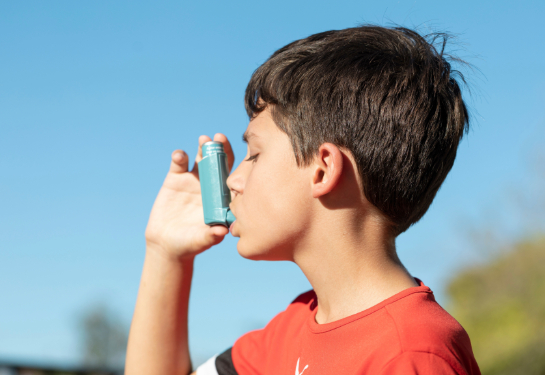New research shows how smoking, vaping and marijuana affect airway health
Cigarette smoke has a greater impact on airway health than marijuana smoke or vaping, according to new research by UC Davis.
The interdisciplinary study analyzed metabolites (molecules produced by cellular chemical reactions) from the exhaled breath of participants to analyze how airways responded. The researchers found that tobacco smoke, in particular, increased inflammation and oxidative stress. Their paper was published in Respiratory Research.
“We didn’t measure the chemicals that come out of cigarettes or marijuana, we measured the responses of the airway epithelial cells, as well as some systemic responses,” said pulmonologist Nicholas Kenyon, director of the UC Davis Asthma Network and co-senior author on the study. “The metabolites tell us quite a bit about oxidative stress and inflammation.”
The study recruited 254 participants, with 132 using a tobacco or marijuana product, sometimes both. The researchers collected exhaled breath condensate, which is the fog people see when they breathe on a mirror.
From there, the team used mass spectrometry to analyze the oxylipin content in the collected condensate. Oxylipins are lipid-based signaling molecules often associated with inflammation and oxidative stress. The researchers found these metabolites were significantly upregulated in tobacco smokers, meaning they increased in activity. The oxylipin responses were less dramatic in participants who vaped tobacco products. For marijuana smokers, the oxylipin profiles were much closer (but not identical) to non-users.
“When we look at the signatures from the marijuana smokers, they look closer to non-users and non-smokers than the tobacco smokers, and that was a surprise to us.”—Nicholas Kenyon
“Cigarettes upregulate these inflammatory fatty acids, but we didn't see that nearly as much with marijuana and marijuana products,” said Kenyon. “When we look at the signatures from the marijuana smokers, they look closer to non-users and non-smokers than the tobacco smokers, and that was a surprise to us.”
These findings diverge from earlier cell culture studies, which showed that both tobacco and marijuana smoke generate significant oxidative stress and inflammation. The current study is the first of its kind with humans.
An interdisciplinary collaboration
The study is the latest effort in a 20-year collaboration between UC Davis pulmonology researchers and the engineers who helped develop the devices used to isolate the breath condensate.
“We came up with a way to collect exhaled breath condensate in a way that provides enough volume to analyze it,” said Cristina Davis, co-senior author on the study, professor of Mechanical and Aerospace Engineering and associate vice chancellor for Research. “To collect it, we had people exhale through a long glass tube that's cooled with dry ice, and that condenses those particles for collection.”
Using this non-invasive approach, the team has been collecting so-called breath libraries for about five years to better understand asthma and other conditions. “Our question in the current study,” said Davis, “is how the biology is altered when people make lifestyle choices like smoking or vaping.”
Future studies to shed more light on airway health
This is one in a series of studies to better understand how tobacco and marijuana affect airway health. In the coming months, the team will begin looking at how these choices affect people with asthma and other lung conditions.
“The participants in the current study were mostly healthy people,” said Kenyon. “But we have patients in the pulmonary clinic who have asthma, COPD or other lung diseases, and we want to know how their airways react to tobacco or marijuana smoke. Do they have a similar response to healthy people or is it worse because their airways are already damaged?”
The group may also look at other inflammatory biomarkers, as oxylipin responses may not tell the entire story.
“We focused on these fatty acid metabolites, which had been looked at previously in cell models, but there are other inflammatory markers we could investigate,” said Kenyon. “We probably need to take a more comprehensive look at the biomarkers to validate these findings.”





